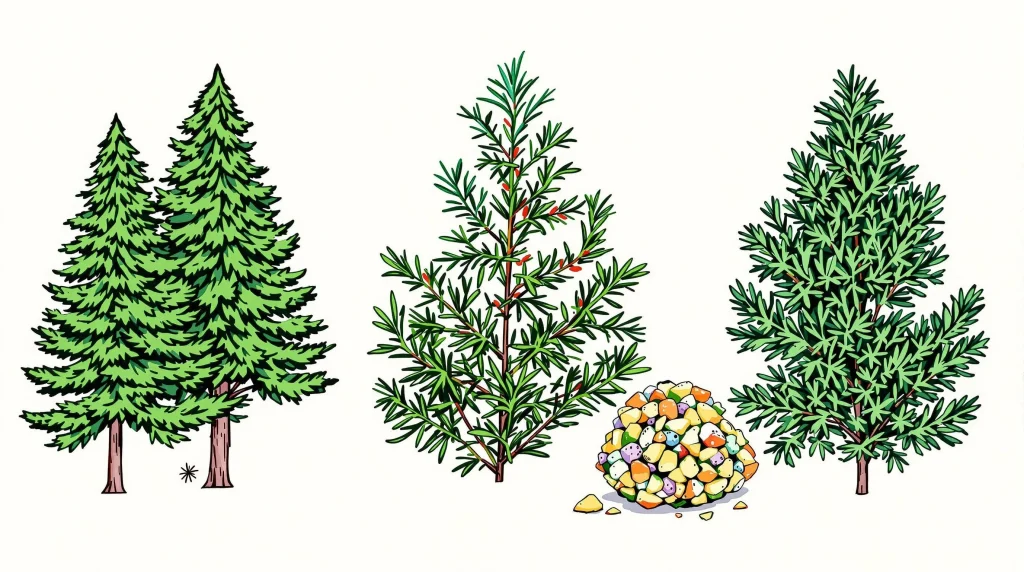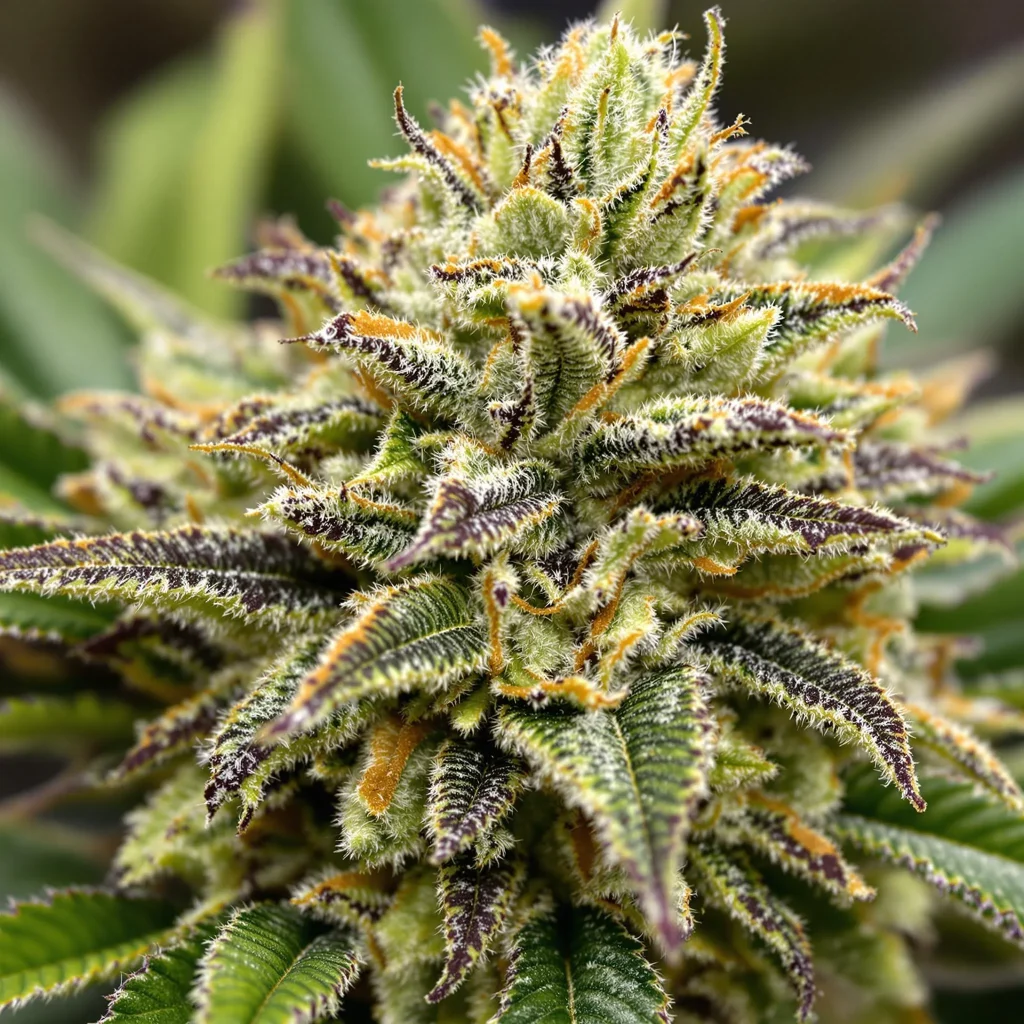When it comes to cannabis, flavor, aroma, and therapeutic effects often take center stage. But what ties them all together? The answer lies in the terpene wheel, a powerful tool that explains the wide spectrum of terpenes, their flavors, and their effects. Understanding terpenes not only enriches your cannabis knowledge but also empowers you to make more informed decisions when selecting strains. Let’s dive into the fascinating world of terpenes and how they shape your cannabis experience.
What Are Terpenes?
Terpenes are organic compounds that naturally occur in cannabis and many other plants. They are responsible for the unique scents and flavors of each strain, from the sweet citrus notes of Lemon Haze to the earthy pine aroma of OG Kush. Essentially, they function as the aromatic building blocks that define a plant’s essence. In cannabis, terpenes contribute more than just aroma, they can enhance and influence the overall experience.
The Origins of Terpenes
Found in the resin glands of cannabis flowers, terpenes develop as a natural defense mechanism. They protect the plant from predators, UV rays, and environmental stressors. Humans have harnessed these aromatic compounds not only in cannabis but also in perfumes, essential oils, and food flavoring. The vast variety of terpenes allows for an almost limitless combination of scents, flavors, and effects, making them a cornerstone of cannabis cultivation and consumption.
How Do Terpenes Work?
Terpenes interact with cannabinoids such as THC and CBD to produce what is known as the entourage effect. This phenomenon enhances the therapeutic properties of cannabis, creating a more comprehensive experience. For instance, the terpene myrcene is believed to increase the psychoactive effects of THC, while limonene may elevate mood and reduce stress. Beyond cannabis, terpenes are abundant in nature, present in fruits, herbs, and spices like lavender, mangoes, and black pepper.
The entourage effect highlights the importance of consuming whole-plant products rather than isolates. It’s the interplay of terpenes and cannabinoids that delivers the most balanced and beneficial effects. For medical users, this means terpenes can amplify the strain’s potential to relieve symptoms, whether for pain, anxiety, or insomnia.
Why Are Terpenes Important?
Terpenes play a critical role in tailoring your cannabis experience. They go beyond merely enhancing the scent and taste of a strain; they actively shape the effects you feel. Whether you’re seeking a calm, relaxed state or an energetic burst of creativity, the terpene profile of your chosen strain can make all the difference.
Customizing Your Experience
Imagine walking into a dispensary and selecting a strain not just based on THC or CBD levels, but on its terpene profile. Linalool, for example, is a terpene known for its calming and sedative effects, ideal for unwinding after a long day. In contrast, pinene can promote alertness and memory retention, making it perfect for daytime use. This ability to customize your experience underscores the importance of terpenes in cannabis consumption.
Potential Health Benefits
Research suggests that terpenes may offer their own therapeutic benefits. For instance, beta-caryophyllene has anti-inflammatory properties, while humulene may act as an appetite suppressant. These compounds provide a natural, holistic approach to wellness, complementing the medicinal properties of cannabinoids. By understanding terpene profiles, users can better match strains to their specific needs, maximizing the health benefits of their cannabis use.
The Terpene Wheel: A Guide to Flavors and Effects
The terpene wheel is a visual representation of the most common terpenes, their flavors, and their effects. It’s a helpful tool for growers, consumers, and enthusiasts to understand what makes each strain unique.
Key Terpenes on the Wheel
- Myrcene
- Flavor: Earthy, musky, with a hint of cloves.
- Effects: Relaxation and sedation.
- Found In: Mangoes, hops, and thyme.
- Limonene
- Flavor: Citrus and lemony.
- Effects: Uplifting and stress-relieving.
- Found In: Citrus fruits and peppermint.
- Pinene
- Flavor: Pine and woody.
- Effects: Focus and memory retention.
- Found In: Pine needles, rosemary, and basil.
- Linalool
- Flavor: Floral and lavender-like.
- Effects: Calming and anxiety-reducing.
- Found In: Lavender and coriander.
Medical Effects of Terpenes: Unlocking Cannabis’ Healing Power
Terpenes aren’t just about flavor—they’re pivotal in delivering cannabis’ therapeutic benefits. These natural compounds play a significant role in enhancing the medicinal properties of cannabis, making them an essential consideration for both recreational and medical users.
Anti-Inflammatory Benefits
Terpenes such as myrcene and beta-caryophyllene exhibit potent anti-inflammatory properties. Myrcene, often found in strains like Granddaddy Purple, helps reduce inflammation, making it valuable for conditions like arthritis or chronic pain. Beta-caryophyllene, a unique terpene that binds directly to cannabinoid receptors, offers targeted relief from swelling and discomfort, enhancing its efficacy in pain management.
For patients suffering from autoimmune disorders or inflammatory diseases, strains rich in these terpenes provide natural alternatives to synthetic medications. This makes terpene-rich cannabis an attractive option for holistic wellness.
Stress Relief
Linalool and limonene are two terpenes celebrated for their stress-relieving effects. Linalool, which lends floral notes to strains, is known for its calming properties, helping to alleviate anxiety and promote restful sleep. Limonene, with its bright citrus aroma, uplifts mood and reduces stress, making it a popular choice for managing depression.
For individuals struggling with mental health challenges, these terpenes work synergistically with cannabinoids like CBD to provide a balanced, non-intoxicating remedy. This underscores the importance of terpene profiles in crafting a customized cannabis experience.
Pain Management
Pain relief is another domain where terpenes shine. Pinene and humulene, often associated with anti-inflammatory and analgesic properties, provide targeted support for those dealing with physical discomfort. Pinene, found in strains like Jack Herer, also improves airflow in the respiratory system, adding an extra layer of therapeutic benefit.
By understanding which terpenes are present in a strain, users can choose cannabis that aligns with their specific pain management needs, ensuring a tailored and effective approach.
Flavors and Aromas in Cannabis Strains: A Sensory Guide
Understanding terpene profiles not only helps identify the medicinal effects of cannabis but also unlocks a world of unique flavors and aromas. From earthy to citrusy, the diversity of terpenes adds depth to every cannabis strain.
Strains High in Myrcene
Cannabis strains like Granddaddy Purple and Blue Dream boast myrcene-dominated profiles. These strains deliver deep relaxation with earthy, musky flavors. Ideal for evening use, they help reduce stress and prepare the body for restorative sleep.
Myrcene’s sedative properties make it a top choice for those seeking relief from insomnia or chronic stress. Additionally, its ability to enhance cannabinoid absorption amplifies the overall effects of THC or CBD.
Strains Dominated by Limonene
For a zesty twist, strains like Super Lemon Haze and Wedding Cake stand out with their high limonene content. These strains provide citrusy flavors and a refreshing aroma, paired with uplifting and mood-boosting effects.
Limonene-rich strains are perfect for daytime use, offering an energizing boost without overwhelming sedation. This makes them a favorite for creative projects or social gatherings.
Strains Rich in Linalool
The floral and herbal terpene linalool shines in strains like Amnesia Haze. Known for its calming effects, linalool is perfect for those seeking relaxation and relief from anxiety. Its subtle lavender notes add a soothing touch to cannabis consumption. Strains rich in linalool are ideal for unwinding after a stressful day, promoting both mental and physical tranquility.
Where Are Terpenes Found? Beyond Cannabis
While cannabis is famed for its terpene diversity, these compounds are present in many other natural sources, broadening their appeal and utility.
In Nature
Terpenes are abundant in fruits, herbs, and flowers. For example, pinene, responsible for the fresh scent of pine trees, is also found in rosemary and basil. Similarly, limonene, known for its citrus aroma, is prevalent in lemon rinds and oranges.
These naturally occurring terpenes offer a sensory connection to cannabis, highlighting how familiar flavors and scents play a role in everyday life. Incorporating terpene-rich foods and herbs into your diet can complement the effects of cannabis.
In Essential Oils
Terpenes are a major component of many essential oils. For instance, lavender oil owes its calming properties to linalool, while eucalyptus oil is rich in cineole, known for its respiratory benefits. These oils are widely used in aromatherapy, skincare, and natural remedies.
The overlap between terpenes in essential oils and cannabis opens up opportunities for pairing strains with complementary scents or therapeutic practices, enhancing the overall experience.
Using the Terpene Wheel to Find Your Perfect Strain
The terpene wheel is a valuable tool for navigating the complex world of cannabis. By visualizing the relationships between flavors, aromas, and effects, it simplifies the process of finding the ideal strain.
Tailoring Your Experience
Whether you’re seeking stress relief, focus, or energy, the terpene wheel helps identify strains that match your goals. For relaxation, linalool and myrcene-dominant strains are ideal, while limonene-rich options provide an energizing boost. This personalized approach enhances both recreational and medicinal cannabis use.
Exploring New Flavors
The terpene wheel also introduces enthusiasts to unique flavor combinations. From spicy and herbal to sweet and fruity, it highlights the diversity of cannabis strains. By experimenting with different terpene profiles, users can discover new favorites and deepen their appreciation for cannabis.

Exploring Rare Terpenes on the Terpene Wheel
While common terpenes like myrcene, limonene, and pinene are widely recognized, rare terpenes also play an essential role in the cannabis experience. These lesser-known compounds can significantly enhance flavor and effects, making them a fascinating area for exploration.
Farnesene
- Flavor and Aroma: Sweet, green apple-like scent.
- Effects: Known for its calming properties and potential anti-inflammatory benefits.
- Found In: Green apples and turmeric.
Farnesene is often overshadowed by more dominant terpenes in cannabis but adds a unique layer of flavor and soothing effects to certain strains.
Ocimene
- Flavor and Aroma: Sweet, citrusy, and floral.
- Effects: Uplifting and energetic.
- Found In: Mint, parsley, and orchids.
Ocimene provides a bright and invigorating aroma, making it a favorite among users looking for a mood boost.
Terpinolene
- Flavor and Aroma: Woody with hints of citrus and herbs.
- Effects: Relaxing yet slightly stimulating, making it versatile.
- Found In: Nutmeg, tea tree oil, and lilacs.
Carene
- Flavor and Aroma: Sweet, earthy, with subtle citrus undertones.
- Effects: Known for its anti-inflammatory properties and potential to reduce excess fluid in the body, such as tears, sweat, and mucus.
- Found In: Rosemary, cedar, and pine.
Carene offers a delicate balance of sweetness and earthiness, making it a valuable terpene for relaxation and wellness. It’s particularly appreciated for its potential to aid in conditions like arthritis and allergies.
Guaiol
- Flavor and Aroma: Sweet, earthy, with subtle citrus undertones.
- Effects: Known for its anti-inflammatory properties and potential to reduce excess fluid in the body, such as tears, sweat, and mucus.
- Found In: Rosemary, cedar, and pine.
Carene offers a delicate balance of sweetness and earthiness, making it a valuable terpene for relaxation and wellness. It’s particularly appreciated for its potential to aid in conditions like arthritis and allergies.
Terpenes in the Entourage Effect
The entourage effect describes the powerful synergy between cannabinoids and terpenes, enhancing cannabis’ overall therapeutic and recreational effects. Terpenes, with their unique chemical properties, interact with cannabinoids like THC and CBD to create tailored and effective experiences for users. This interplay has made terpenes a crucial focus in cannabis research and product development.
How Terpenes Influence Cannabinoid Effects
Terpenes significantly impact how cannabinoids interact with the body’s endocannabinoid system, modulating effects to provide specific benefits. For instance:
- Myrcene: Enhances cell permeability, making it easier for cannabinoids to be absorbed into the bloodstream. This terpene is often associated with deep relaxation and sedative effects. Additionally, it may amplify the pain-relieving properties of THC, making it beneficial for chronic pain conditions.
- Limonene: Amplifies the anti-anxiety effects of CBD, contributing to a calm and uplifted mood. It’s also known for its potential to improve digestive health and support immune system function.
Through these interactions, terpenes offer an additional layer of customization to cannabis use, allowing for a broader range of therapeutic applications. Users seeking pain relief or stress management can select strains based on their terpene profiles to optimize results. Their ability to enhance the bioavailability of cannabinoids further highlights their importance in cannabis consumption.
Personalized Cannabis Experiences
Understanding terpene profiles enables users to craft personalized cannabis experiences tailored to their needs. For example:
- Strains rich in pinene can provide mental clarity and focus, ideal for daytime use. Pinene’s fresh, herbal aroma also offers respiratory benefits, making it a favorite among those with sinus issues.
- High linalool content offers calming effects, making it suitable for relaxation or stress relief. Its floral notes contribute to a soothing experience that can alleviate anxiety or enhance sleep quality.
This knowledge empowers users to make informed decisions, whether they’re looking for relaxation, energy, or targeted therapeutic effects. It’s a testament to the importance of terpenes in modern cannabis consumption, offering users more control over their experiences.
Incorporating the Terpene Wheel in Everyday Life
The terpene wheel isn’t just a tool for cannabis enthusiasts; it’s a versatile guide that can enhance various aspects of daily life. By understanding terpene characteristics, individuals can make more informed choices in aromatherapy, cooking, and wellness routines.
Enhancing Aromatherapy
Many terpenes found in cannabis are also prevalent in essential oils used for aromatherapy. For example:
- Linalool, abundant in lavender oil, is renowned for its calming and sleep-promoting properties. Its relaxing effects can help alleviate stress and tension when used in diffusers or massage oils.
- Limonene, present in citrus oils, uplifts the mood and boosts energy levels. It’s often used in morning routines to encourage a positive and invigorating start to the day.
The terpene wheel can help users select the right essential oils to achieve specific goals, such as relaxation, focus, or invigoration. Combining these oils in diffusers or massages adds a therapeutic dimension to self-care routines, enhancing overall well-being.
Cooking with Terpenes
The terpene wheel is also a valuable resource in the kitchen, guiding flavor pairings to create unique culinary experiences. For instance:
- Limonene-rich strains pair beautifully with citrus-based dishes, enhancing both aroma and flavor. These combinations create bright, zesty meals perfect for summer gatherings.
- Pinene-dominant strains complement herbal recipes, bringing out the freshness of ingredients like rosemary or basil. Their earthy tones can elevate pasta sauces, marinades, and soups.
By integrating terpenes into recipes, chefs and home cooks can craft meals that are not only delicious but also infused with therapeutic potential. This approach makes terpene knowledge an essential tool for culinary creativity and personalized dining experiences.
Wellness and Self-Care
Terpenes can elevate wellness and self-care practices, offering holistic benefits. For example:
- Adding linalool to bath products creates a deeply relaxing soak, ideal for unwinding after a long day. Pairing it with chamomile or Epsom salts enhances its calming properties.
- Eucalyptol, found in eucalyptus oil, can be incorporated into steam baths to clear sinuses and promote respiratory health. Its refreshing scent also energizes the mind and body.
These simple yet effective uses of terpenes underscore their versatility and importance in enhancing everyday life. From spa treatments to meditation, terpenes bring natural wellness solutions within easy reach.
Myths About Terpenes
Despite their growing popularity, terpenes are often misunderstood. Let’s debunk some common myths to clarify their role in cannabis and beyond.
Myth 1: Terpenes Only Affect Flavor
While terpenes do play a significant role in determining flavor and aroma, their influence extends far beyond taste. They interact with cannabinoids to shape the overall effects of cannabis, contributing to therapeutic benefits such as pain relief, relaxation, and energy. These interactions demonstrate how terpenes enhance both the sensory and functional aspects of cannabis consumption.
Myth 2: All Strains with Similar Terpenes Have Identical Effects
Not all strains with similar terpene profiles produce the same effects. Factors like terpene concentration, cannabinoid content, and individual body chemistry influence how a strain impacts the user. This complexity highlights the importance of holistic strain analysis, encouraging users to explore various combinations for tailored results.
Myth 3: Terpenes Are Only Found in Cannabis
Terpenes are ubiquitous in nature, present in fruits, herbs, flowers, and trees. For example:
- Pinene is abundant in pine trees and rosemary, offering a fresh, woody scent.
- Limonene is found in citrus rinds, contributing to their bright, tangy aroma.
These natural sources demonstrate the versatility of terpenes, which contribute to the aromas and therapeutic properties of countless plants. Their presence in everyday items underscores their significance beyond cannabis.
Terpene Safety and Consumption
Terpenes are generally safe for consumption, but understanding their properties and proper use is crucial for maximizing their benefits.
Are Terpenes Safe?
When consumed in their natural form, terpenes are non-toxic and widely regarded as safe. However, caution is advised with concentrated terpenes, as excessive use can lead to irritation or adverse effects. Moderation ensures a positive and effective experience, allowing users to enjoy the full range of benefits without risk.
Dosage and Moderation
Start with small amounts of terpenes when incorporating them into cannabis products or recipes. This approach allows you to gauge their impact and avoid overpowering flavors or effects. A little goes a long way in enhancing the overall experience, making it easier to fine-tune dosages for optimal results.
Storing Terpenes
To maintain their potency and quality, store terpenes in airtight containers away from heat and light. Proper storage ensures their longevity, allowing you to enjoy their benefits for extended periods. Keeping terpenes in cool, dark environments also preserves their aromatic and therapeutic properties, making them a reliable addition to your cannabis toolkit.

FAQs About the Terpene Wheel
What is the terpene wheel?
The terpene wheel is a comprehensive visual guide that organizes terpenes based on their flavors, aromas, and potential effects. It serves as a valuable tool for both recreational and medicinal cannabis users, providing insight into how specific terpenes influence the cannabis experience. The wheel simplifies the process of choosing strains, allowing users to match their preferences for taste and desired effects, such as relaxation or energy.
How do terpenes affect cannabis?
Terpenes play a pivotal role in shaping the overall experience of cannabis by contributing to its flavor, aroma, and effects. These natural compounds interact with cannabinoids like THC and CBD in what is known as the entourage effect. For instance, limonene can amplify CBD’s calming properties, while myrcene may enhance THC’s sedative effects, creating a more potent and tailored outcome.
Can the terpene wheel be used for medical cannabis?
Absolutely. The terpene wheel is an essential tool for medical cannabis users seeking relief from specific conditions. It helps identify strains with terpene profiles that align with therapeutic goals, such as reducing inflammation, alleviating pain, or managing anxiety. For example, strains high in beta-caryophyllene may be ideal for those dealing with chronic pain, while those rich in linalool can aid in anxiety or insomnia relief.





